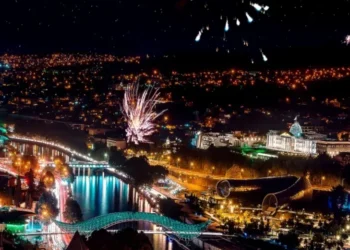It has been my great privilege, over the last couple of months, to shift from photographing only the land- and waterscapes of Dighomi Meadows to hunting, with my lens, its fauna. My efforts are amateur, but not without success.

First were terrapins: not, apparently, turtles, though I had to look up their differences, as well as contrast them with tortoises. All three are related, but turtles are entirely aquatic, tortoises entirely land-dwelling (they would die in water over their heads), and terrapins water-loving but also to be found on land.
Terrapins and turtles are both omnivores, eating everything, both animals and vegetation; turtles have flippers and live mostly in seas and oceans, whereas terrapins live in ponds and have clawed toes on webbed feet. I quietly found a few specimens sunning themselves on pond logs or shores, and one on the sidewalk near one of the ponds.

Then came the muskrat/otter/nutria debate, not yet entirely solved locally. Otter Island on the Mtkvari may well house actual otters: proving or disproving this is beyond me at present, needing a quiet drone perhaps, and lots of patience and batteries. Indeed, never seeing an otter on or near that island would not disprove their existence there, whereas seeing one would prove it. Beavers and water voles have also been suggested to be what I saw and photographed, but the diminutive size of the latter and wide flat tail of the former have eliminated them to my satisfaction. Nutrias are about twice the size of muskrats, so all I really need to do is accurately estimate the size of what I have seen, which (in their current pond location) are clearly not otters, by head and body shape.
Birds? These have ranged from common small birds like wrens, through water birds (mallard ducks and possibly velvet scoters), crows or ravens, magpies, woodpeckers, the sound only of kingfishers, right up to the 11 herons I counted in the sky together this morning. Having only a 300mm lens for longest reach, I struggled both to focus and to shoot them. But I managed a few frames, one really sharp enough, and will try for more soon: panning, different lighting, wings motion-blurred. These heron images are crops of 24-megapixel frames, but they’ll do. (Note to self: change the autofocus zone to a wider one, and the shooting mode from single shot to burst…). Birds are such quick movers!

I don’t expect to have much luck at all shooting a kingfisher. I would need a much longer lens than 300mm, more like 1000, with a nice wide aperture to let in as much light as possible for a fast enough shutter speed to catch its zippy darts. Very expensive glass. Trust me, those kingfisher shots you see online are each one in a thousand images using top equipment.
Snails with a shell about the size of a large walnut are everywhere on the roads and paths.

Frogs I have only heard, one type with a loud croaking call and the other with a much sweeter chirp, as they call for mates. I have seen the odd splash, and never yet the live amphibian. But they forcefully make themselves known.
Pairs of white butterflies: you see how vague I am with species identification? This is the best I can do at the moment. Specialists will have to bring more precision.



The thing I am learning is that Dighomi Meadows, with all its tortured, dug-out and dumped-on landscape, both its more natural and stagnating man-made ponds, is crawling and flying with all sorts of wildlife. Nature is saying, “Even here, where you humans have brought great pollution and spoilage, we can survive. You can find us here, either oblivious to your messes of garbage or clinging on in spite of them. If you stopped for a moment, you would hear and see us in the silence. And if you stayed away for just a little while, you would find that we have re-wilded the whole place, much more to our liking.”

Some of what we humans have dumped here, especially the plastics, may last for decades or longer, hopefully not leaching too much into the land. The cement and metal will be less harmful if taking even longer to melt away. Glass? Millennia, easily, though it’s nearly perfectly inert. Same for ceramics. There don’t seem to be too many liquid chemicals, thank God. But the war between humanity at its trashy worst and nature at its best is ongoing in Dighomi Meadows. It’s a reversible sacrilege, too: what we dumped, we can also commit to removing…
Blog by Tony Hanmer
Tony Hanmer has lived in Georgia since 1999, in Svaneti since 2007, and been a weekly writer and photographer for GT since early 2011. He runs the “Svaneti Renaissance” Facebook group, now with over 2000 members, at www.facebook.com/groups/SvanetiRenaissance/
He and his wife also run their own guest house in Etseri: www.facebook.com/hanmer.house.svaneti














